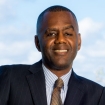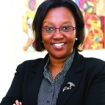PwC’s 28th Annual Global CEO Survey methodology
Survey methodology
We surveyed 4,701 CEOs in 109 countries and territories from 1 October through 8 November 2024. The global and regional figures in this report are weighted proportionally to country nominal GDP so CEOs’ views are broadly representative across all major regions. The industry- and country-level figures are based on unweighted data from the full sample of 4,701 CEOs, including 4,236 men, 401 women, and 64 who identified with another gender or preferred not to say. Further details by region, country and industry are available on request. All quantitative interviews were conducted on a confidential basis. Among the CEOs who participated in the survey:
- 3% lead organisations with revenues of US$25 billion or more
- 3% lead organisations with revenues between US$10 billion and US$25 billion
- 20% lead organisations with revenues between US$1 billion and US$10 billion
- 33% lead organisations with revenues between US$100 million and US$1 billion
- 36% lead organisations with revenues of up to US$100 million
- 62% lead organisations that are privately owned.
Notes
Percentages in charts may not add up to 100%—a result of rounding percentages; multi-selection answer options; and the decision in certain cases to exclude the display of certain responses, including ‘Other,’ ‘Not applicable’ and ‘Don’t know.’
The research was undertaken by PwC Research, our global centre of excellence for primary research and evidence-based consulting services.
About the reinvention action index
We asked CEOs about the extent to which companies took the following actions in the last five years: developed innovative products or services, implemented new pricing models, collaborated with other organisations, targeted new routes to market, and targeted a new customer base. We then combined responses to this question into an index using factor analysis, a statistical method that enables the combination of individual responses into a factor that they all have in common. Finally, we calculated a number for each CEO that represents their level of reinvention—in other words, a reinvention index score. Index score values represent standard deviations from the mean; a higher score on the index indicates more reinvention.
Advanced statistical techniques
Some analyses used advanced statistical techniques to look for relationships between questionnaire responses. These analyses went beyond dividing CEOs into groups (say, those with high levels of reinvention action and those with low levels) and comparing responses (such as average profit margin) within those groups. Rather, we employed Bayesian multilevel regression analyses within a causal inference framework to estimate counterfactual marginal effects.
Counterfactual marginal effects measure the difference in outcomes that would occur if a specific level of a variable was changed while keeping everything else the same. They help us understand ‘what would happen if…?’ scenarios, such as predicting how a business outcome might improve if a particular strategy were implemented differently. This approach allowed us to model the relationships between variables, while accounting for uncertainty, and identify the causal effect of one variable on another, assuming that the hypothesised causal model is correct (e.g., no other variables other than the ones adjusted for affect the two variables of interest).
For most of these analyses, we adjusted for the effects of industry (e.g., industry sector, market concentration), company characteristics (e.g., company size, geography) and CEO characteristics (e.g., tenure). Further, we modelled outcome variables based on the assumed data-generating process (e.g., linear regression for normally distributed data and logistic regression for Bernoulli-distributed data); ordinal predictors were modelled as monotonic effects.
Get in touch
For questions about the data, including additional cuts, contact the CEO Survey research and analytics team.
For media inquiries, contact Dan Barabas.
Subscribe now
Get s+b leadership insights direct to your inbox
Contact us













Jiří Moser
Country Managing Partner and CEE Advisory leader, PwC Czech Republic
Tel: +420 251 152 048

















Azamat Konratbayev
Managing Partner, PwC Eurasia Assurance Leader, PwC Kazakhstan
Tel: +7 727 330 3200





Mekong Territory Senior Partner and CEO for PwC Thailand, PwC Thailand
Tel: +66 (0) 2844 1000

















Abdulkhamid Muminov
Partner, Eurasia Tax, Legal and People Services Leader , PwC Uzbekistan
Tel: +998 78 120 61 01


Shirley Machaba
Regional Senior Partner, PwC South Market Area, PwC South Africa
Tel: +27 (0) 11 797 5851
























